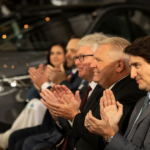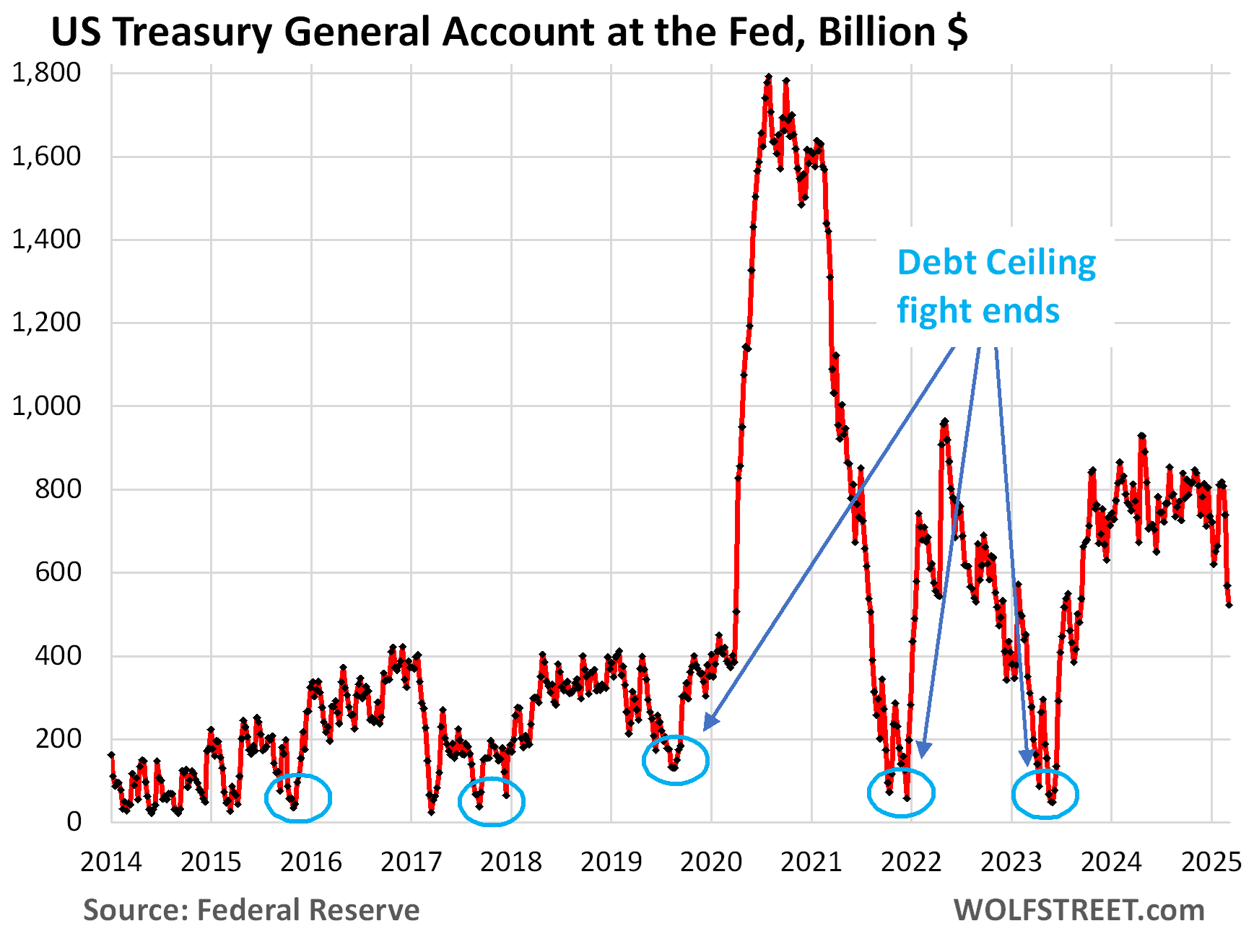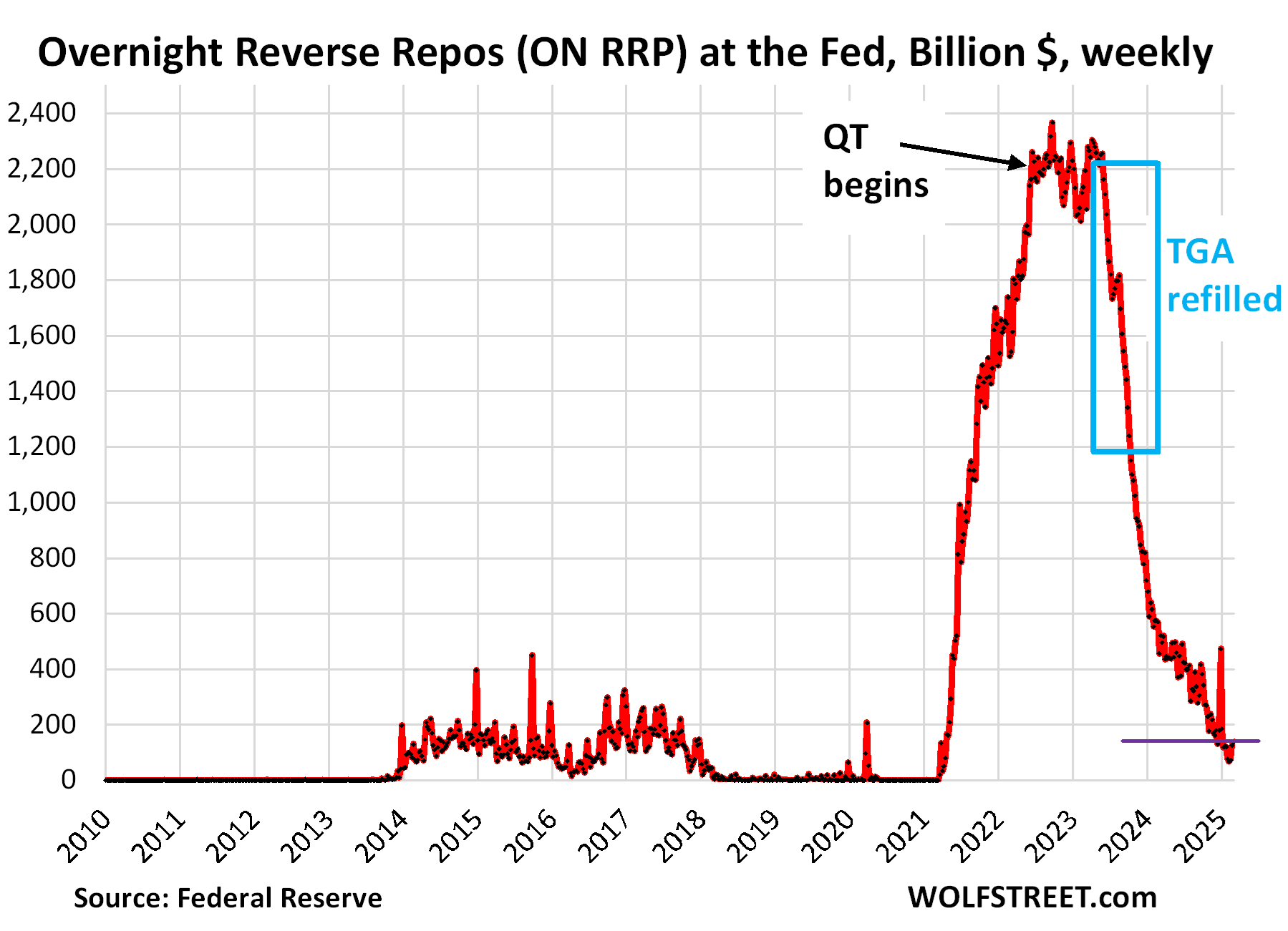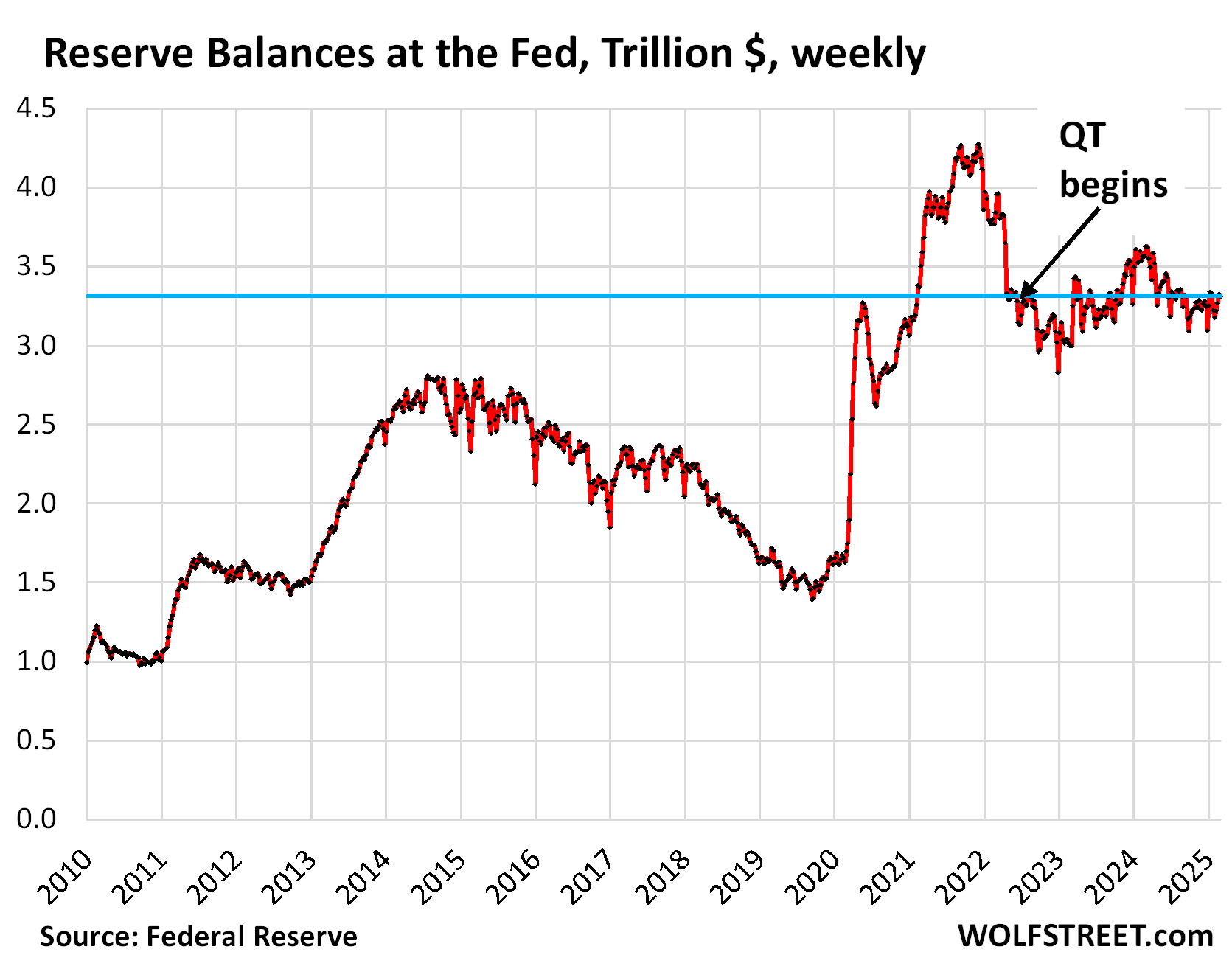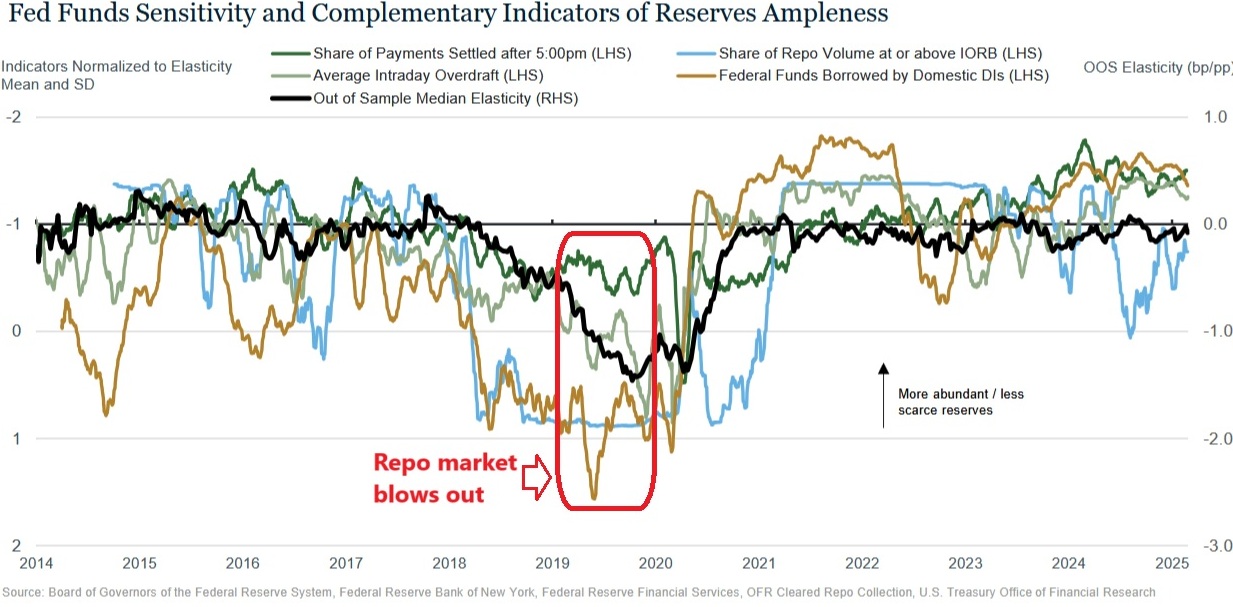Energy News Beat
n Energy News Beat – Conversation in Energy, Stuart Turley welcomes Wasif Latif, Co-Founder & CIO of Sarmaya Partners, for their third discussion on energy and finance. They explore the growing demand for natural gas driven by AI, the undervaluation of traditional energy sectors, and the role of commodities in investment portfolios. Wasif shares insights on Sarmaya’s thematic ETF (LENS), which focuses on energy, gold, uranium, and industrials. They also discuss geopolitical energy shifts, rising energy consumption, and the financial market’s delayed recognition of these trends. The conversation highlights how undervalued assets present long-term investment opportunities.
Thank you, Wasif, for stopping by the podcast! I had an absolute blast and appreciate your financial leadership.
Please connect with Wasif on his LinkedIn HERE:https://www.linkedin.com/in/wasiflatif/
Check out Sarmaya Partners HERE: https://sarmayapartners.com/
Highlights of the Podcast
00:00 – Intro
01:20 – The Trump Effect & Energy Investment Landscape
02:43 – AI’s Growing Demand for Natural Gas
03:42 – What Makes Sarmaya Partners Different?
07:35 – The Case for Commodities & Energy Investing
08:49 – Global Energy Consumption is Still Rising
10:43 – Bill Gates & BlackRock’s Shift on Natural Gas
13:10 – LNG’s Potential for Global Energy Security
14:50 – The Future of Energy Markets & Infrastructure
17:24 – Turley’s Law: More Renewables = More Fossil Fuels
20:07 – Sarmaya’s Thematic ETF (LENS)
22:26 – Key Investments: Uranium, Copper & Industrial Growth
23:36 – The Energy-Driven Commodity Supercycle
25:32 – The Market’s Mispricing of Energy Assets
27:44 – Closing Thoughts & How to Connect
Full Transcript:
Stuart Turley – President and CEO of Sandstone Group [00:00:07] Hello everybody, welcome to the Energy Newsbeat Podcast, my name is Stu Turley, President CEO of the Sandstone Group. We are living in a crazy kind of fun time right now, and today we are going to be talking about energy and finance. So not only energy and finance is changing, we’re talking, I like understanding what is going on in the world. And today we have Wasif Latif. He is the head guy over there at Samaria Partners, and I’ll tell you what, this is our third podcast and I cannot wait to get an update from you. Welcome, Wasif, how are you today?
Wasif Latif – Co-Founder & Chief Investment Officer Co-Founder & Chief Investment Officer Sarmaya Partners [00:00:46] You’re doing great. Thanks, Stu. Pleasure to be with you again. Great always to catch up.
Stuart Turley – President and CEO of Sandstone Group [00:00:51] I’m going to be quite honest, as a selfish podcast host, having a great guest come back again is A, rewarding, but B, the first podcasts were phenomenal and I got great feedback on your industry, and I’m really looking forward to getting an update on what you think after we have the Trump effect going on, what is going on in the energy and investment space right now.
Speaker 3 [00:01:20] It’s a lot of excitement for sure. It’s a combination of a new source of demand coming in from the technology space with the AI boom and within the span of six to 12 months, we’ve had a market that’s now in love with natural gas because of the beauty of what the cheap and abundant availability of natural gas can do for the enormous AI needs. which when you look at the commodity price, it actually even baked in. And what moved natural gas earlier was the colder than expected January that we’ve had across the country. But yeah, there’s a lot of opportunity there. And then secondarily, we think that the energy space, especially when it comes to traditional carbon energy, like oil and gas, there’s a case to be made that there’s a lot of opportunity there because it still continues to be by and large by the financial markets, and under loved, overlooked, and largely ignored. And yet these companies are fundamentally strong. Their valuations are attractive and they have a lot of opportunity in front of them, both from the price of the commodity standpoint, but also from the efficiencies that they’re ringing out of their businesses. So we’re very excited about that in the energy space. And then as you know, we also have a bigger exposure to gold in the portfolio as well.
Stuart Turley – President and CEO of Sandstone Group [00:02:44] I’ll tell you, this is pretty exciting. And especially when you mentioned that I have talked about Wasif on our podcast several times, that regimes will change if people don’t have access to low cost energy and we’re seeing that play out in Europe and the United States has got such a great oil and gas and a solar wind. We’ve got it all here in the United States, coal. And boy, I am looking forward to getting Lee Zeldin on the EPA and getting some regulations cut to help cut energy costs. But if you wouldn’t mind, kind of lead us through what makes Samaria different. Because one of the first things that I noticed when we had our earlier podcast, your investment model is different. And I really appreciate that and if you don’t mind just covering that a little bit right now because people need to hear what makes you different
Wasif Latif – Co-Founder & Chief Investment Officer Co-Founder & Chief Investment Officer Sarmaya Partners [00:03:43] Well, thank you for the opportunity. So, you know, as we’ve talked about before, our firm Surmaya Partners is really all about trying to harness what we think is going to be the next big major themes that are coming up in the market and capitalizing on those and not only investing in them, but basically focusing on them and building concentrated portfolios, looking at them generally through equities and then writing that sort of theme up. What a lot of times what happens is you see a theme and it begins to do well and people are like okay that’s good, that’s enough, we’re going to take some profits. But history shows and I think we’ve shared a slide in the past, I’d love to share it with you again, which shows that you know actually once the theme starts running it runs for a long time and we think that the current one that’s focused on big tech is you know close to its maturity and might end at point and we think that the next big one is going to be around commodities, largely centered on traditional commodities like oil and gas, but also broadly speaking across different ones. So this chart is basically sort of a history of different themes, but our portfolio is squarely focused on this last one here on the bottom right, which is what we’re calling the return to tangibles of what we think is going to be a big driver of the markets in the future. And so one additional thing I’ll just touch on is the broader commodities mean a lot of things for a lot of people. It’s just general. So how do we bring it into something that’s more tangible and focusable in the portfolio? And so what we’ve done is we’ve broken our return to Big picture theme into smaller semi sub themes, if you will, and and they are focused on you know, the the concept of energy is life. We’ve heard that phrase many times. It is critical. And to your point earlier, abundant, cheap energy is the foundation and the epicenter of economic prosperity. And so we are big believers in that. And we think that the U .S. now is in a great spot to be able to capitalize on. on that, particularly when it comes to natural gas, given how we have a lot of it and it’s still on a relative basis compared to the rest of the world. It’s very, very cheap, which gives us a lot of arbitrage opportunities. But then there’s other energy sources as well like nuclear, for example. And then the other themes are around the fiscal challenges that we’re seeing, the high levels of debt across the world in the developed world in Western nations, and the geopolitical risks that we’re seeing elevated over the several years and what that means for the price of gold and how it’s doing well. Interestingly, we’re talking today towards the end of January, and gold is hitting an all -time high today because the dollar is sort of taking a break and a breather today. And then we have a broader swath of commodities in the portfolio. One more slide I’ll show before I’ll stop talking is, in the longer history, so this chart is going back to the 1970s, and it is showing the comparison of stocks to commodities. So as this line is rising, commodities are outperforming stocks through the lens of the S &P 500. And as this line is declining. stocks are outperforming commodities. And so we’re at a point where it’s touching the bottom, fishing right around the bottom of the barrel in terms of commodity relative pricing to stocks. So we think that the environment is ripe, the valuations are attractive, and we think the next several years are going to be very conducive for this type of an asset class and this type of an allocation to do well. So that’s what we’re allocating to portfolio.
Subscribe now
Stuart Turley – President and CEO of Sandstone Group [00:07:36] It makes so much sense. I mean, everything that you’re addressing in your fund is refreshing. It just makes sense. Cause I look at the world from a total energy, global perspective, geopolitical. What to the market and everything else and you got you guys are nailing exactly what’s going on And i’m not just trying to be nice to you because you’re a guest on the podcast I’d tell you if I thought something else was kind of kind of odd. Thank you for that
Wasif Latif – Co-Founder & Chief Investment Officer Co-Founder & Chief Investment Officer Sarmaya Partners [00:08:06] Thank you for that. We think we are onto something and it really is born out of just looking at the world from a top -down perspective and thinking through what is because it’s all about where we think the hockey puck is going to go, not where it is today. It’s very important to have success in the investment world in your portfolios over the long term. You need to be able to get into stuff that hasn’t really moved yet and is thought of differently by the market. So there’s the potential for the market rethinking the importance and rethinking the value of what you’re buying. So it’s trying to get into like a neighborhood that’s up and coming or is going to be in five to seven years and you’re getting there sort of you know on the ground floor if you will. You need to be.
Stuart Turley – President and CEO of Sandstone Group [00:08:56] I like that, getting to a neighborhood five to seven years early before the neighborhood goes to hay in a handbasket. I like that.
Wasif Latif – Co-Founder & Chief Investment Officer Co-Founder & Chief Investment Officer Sarmaya Partners [00:09:05] Yeah. Well, interestingly, it’s already moving in that direction. So for the past few months, it’s been, you know, beginning to move in that direction. So I think there’s some activity there where the market is beginning to recognize it. It’s certainly been there for gold for the better part of the last year. But when it comes to traditional energy, like oil and gas, we think there’s a lot of opportunity there as well.
Stuart Turley – President and CEO of Sandstone Group [00:09:26] Without derailing our conversation for just a second, I noticed that in the last week, Bill Gates has even said at Davos, I thought this was absolutely hysterical, oh, we’re going to need natural gas power plants for the next five years because we can’t get enough nuclear power. And I’m sitting here kind of going, you know, I’ve been saying that for quite a while, Bill, and I know Bill Gates does not listen to my podcast because he would like what I have to say about him. But, you know, when you sit back and think about Bill Gates going out and saying that to the entire crowd, all of a sudden, Larry Fink with BlackRock also said the same thing. And I’m kind of like, wait a minute. If they’re now realizing that natural gas is OK and low cost energy for AI is required, it’s also required because if you take a look at high cost of energy, Germany is in the process of deindustrializing The UK is de -industriizing, New York is de -industriizing, California is de -industriizing. What thread do they have? High energy costs. Oh, so it’s kind of refreshing that the two big financial dogs of a world would be saying that. Maybe they’re looking at your slide deck.
Wasif Latif – Co-Founder & Chief Investment Officer Co-Founder & Chief Investment Officer Sarmaya Partners [00:10:41] Maybe you’re looking at your slide deck. Yeah. So you’re, you’re spot on Stu in, in the natural gas, sort of the world coming to it and saying, oh, wow, this is, this is really good. And I think it’s been sort of this step -by -step process where, number one, you saw over the last couple of years the challenges that have been there for renewables, solar and wind, have surfaced to a point where people are realizing it can’t withstand the heavy -duty industrial baseload that we need, number one. Number two, what else can we harness? Well, nuclear is fantastic. It’s clean. It is so, so efficient and abundant in terms of its strength that one nuclear power plant is going to be, you know, so much energy efficient. That’s great. But it takes a long time to build them. So in our portfolio, we have uranium. We like uranium for that longer term journey. But we also have a lot of natural gas because the next logical conclusion is well, what’s clean and what’s abundant and what’s cheap and is very, very easy and quick to implement. and it all comes to natural gas from that perspective. And one of the reasons that we’ve liked natural gas even before this AI boom has kind of taken it with it was the differential in the prices on a global basis. So natural gas here in the U .S. is very, very cheap. In Europe and in Asia, it trades at a much, much higher price, like multiples of what we have And so it is a very much historically. It’s been a very much localized market, right? It’s because whatever you produce you sell locally unlike oil which is a global market because you can ship it around you can So the price of oil is very efficient and it’s like global globally set with natural gas Because it’s been local you have these differentials, but now you’re in the process of actually beginning to Globalize this market because now we are building and have terminals that we can ship LNG overseas and have that arbitrage and so what happens naturally over time is we believe that this localized market is gonna become global and you’re gonna see this sort of parody coming to play it’s gonna be a long journey but that means that the beneficiaries of that will be US natural gas producers and exporters because they have the cheaper product that the rest of the world wants and so as that comes in you’re gonna see these companies and sort of the U .S. players.
Stuart Turley – President and CEO of Sandstone Group [00:13:10] isn’t that great now there’s two things that i want to bring up i think that the lng to power plants like vietnam just put in and they’ve just taken in their first deliveries if we could do the same for hawaii because they’re hawaii is running 60 percent of hawaii’s power plants are on fuel oil. Fuel oil is just as dirty as coal. Yeah, you know, I hate to tell everybody that but you know here we have our paradise and why don’t we get rid of the wartime power act for the Jones Act and allow an LNG to power plant in Hawaii I think was if we need to go ahead and get this thing rolling so we can go do a walk around and approve it Personally so you and I can fly there and go check it out So you like.
Wasif Latif – Co-Founder & Chief Investment Officer Co-Founder & Chief Investment Officer Sarmaya Partners [00:13:56] Yeah, I’d be happy to take a trip to Hawaii for any excuse. Oh, yeah. I think you’re onto something because what you’re talking about is the comparison of the price of oil versus the price of natural gas. And we know that natural gas is cheap, but there’s this thing about the US oil dollar equivalent price of gas. And historically, it’s generally been roughly 6 to 1 ratio. So, so if you think of it that way, natural gas is cheaper on a relative basis to oil as well. So not only is it beneficial from sort of, you know, the emission standard, emission standpoint, it’s also very economical. And that’s why you’re seeing sort of this rush of people moving in that direction. So yeah, so we’re excited about that. And then lastly, I’ll also mention the overall usage of energy around the world and have a chart we can share that has continued to rise. I love this chart. Irrespective of what you know what what sort of the the expectations might be or what the the world thinks it is because there’s there’s always this perception that and there’s been this idea that for the non -traditional stuff or the energy transition to materialize and be effect traditional energy must die. And that is completely not true. And this chart kind of proves it that since 1965, there has been a steady clip of increasing consumption of energy around the world. So this is global. It’s everybody around the world. And we have done nothing but increase the usage of energy. And it’s because as the world develops, as more and more countries grow economically, their populations, Asia is the biggest continent in the world in terms of population, and as those countries continue to develop and their citizens consume more and more energy, this charge is going to continue to go northward. And so that’s one point, that this line continues to rise, number one. Number two is that when you look at the breakdown, oil and natural gas are still some of the biggest chunks of this. Coal is a very big chunk, and we know that’s because a lot of countries in Asia like India and China are continuing to burn that. And that might not go away unless and until they find that attractive substitute, which could be natural gas. But the point of this is that the stuff that’s being used in the market in the world is the stuff that’s being underappreciated by the financial markets. And that’s where we think that that adjustment is going to occur. And we think that as the supply around the world ultimately ends up being not as abundant as the world thinks. And again, it’s all about expectation. It is. So the supply is going to continue to be there. But in order to continue to supply the energy of today, we need to continue to reinvest in wells. We need to continue to reinvest in that technology. And that needs to continue. And unless that continues, the supply might face some challenges. And as a result of that, we think the market is thinking, oh, there’s abundant supply, it’s never going to end, and therefore we don’t think this is going to be a pricey thing. We think that the supply and demand dynamics are actually going to prove that not only is the demand going to continue to grow, but the supply is not as readily available as the markets are thinking. Oh yeah, I think Yeah, so we’re – and have a chart.
Stuart Turley – President and CEO of Sandstone Group [00:17:24] This brings up about 19 different points, and one of the biggies is that I’ve found over the last several years, I love that slide by the way, well done to you and your staff, is that the more money is spent on renewable energy, the more we will use fossil fuels. Call it Turley’s law, if you will. I had another guest call it and said, hey, that sounds like Turley’s law. And that is the more money we have spent on renewable energy the more fossil fuels are used. Well, I mean that has been coming to pass and that slide really points that home that we’re using more energy. And if you take a look at the cost that renewable energy of wind and solar, they’re not that sustainable.
Wasif Latif – Co-Founder & Chief Investment Officer Co-Founder & Chief Investment Officer Sarmaya Partners [00:18:15] And I would agree, I think the, so not only is it the cost. But it’s also, as you know very well, Stu, is the difference between intermittency and the baseload needs. Exactly. And that’s where countries like Germany are being challenged, where they have plenty of that type of energy, but it doesn’t help grow or maintain your industry. In order to grow and maintain your industry, you need something with a very reliable and significant baseload capacity. And that comes from oil and gas. and you get here and it is.
Stuart Turley – President and CEO of Sandstone Group [00:18:49] It is so sad that they have stopped their nuclear power plants, they’ve reopened their coal plants, and now they have even made the suggestion Chancellor Schultz is now having to face a runoff because he had a vote of no confidence, and his challenger is saying will somebody please fire up the one remaining Nord Stream pipeline to get us some low -cost natural gas. I’m like, I did not have that on my bingo card, you know, it was pretty sad.
Wasif Latif – Co-Founder & Chief Investment Officer Co-Founder & Chief Investment Officer Sarmaya Partners [00:19:24] I mean, to me, it’s a reminder to not put all your eggs in one basket when it comes to this type of security. This is about, it’s a national security type of a question. And so it’s important to have the backup and they relied solely on the cheap natural gas coming in from Russia and when that stopped and that’s when all of these troubles began for them and they’ve been scrambling ever since trying to find other options. So yeah, it is definitely a challenge. But we think, you know, over time, there should be some remedies that they work on, but in the meantime, they’re losing ground to, you know, their industrial strength and advantage that they’ve had to others.
Stuart Turley – President and CEO of Sandstone Group [00:20:07] You know, I just, I thoroughly enjoy our discussions, Wasp, because your outlook on how investing is done is unique. And I find it refreshing, not because you agree with me, it’s because you look at it from a different view that I see from other folks. So I’m sorry for being nice to you. And I’m not trying to be too nice. How do people find out how to either get your slide deck and or invest with Samaria?
Wasif Latif – Co-Founder & Chief Investment Officer Co-Founder & Chief Investment Officer Sarmaya Partners [00:20:42] Yeah, so thank you for that. So we this this stuff that I’ve been talking about, it’s it’s it’s not just theory. It’s an actual strategy. Yeah, we have been managing for for quite some time. And just recently, we launched our Sermaya thematic ETF that No way! that captures this strategy. The ticker is called L -E -N -S, so it’s lens. And we pick that because it encapsulates what we’re doing. We’re looking at the world through our lens and solving a puzzle for our investors to create a portfolio where we think that you can find what you think is going to do well in the next market cycle and the next mega theme and really capitalize it and focus only on that and build a concentrated portfolio. So it is a stock portfolio. We’re investing in the companies of these types of commodities and industrial companies that are gonna benefit from these themes. And we’re doing it for a much longer term. So we’re investors, we’re not traders, we’re not looking to get in and out of this stuff. We’re buying these things because we know that there’s a secular growth phase that’s in store for these companies. So Lens, L -E -N -S. and that’s where that’s if they go to our website for the ETF is called SarmayaETF .com S -A -R -M -A -Y -A -E -T -F .com and they should be able to it immediately will take them to a page where there’s all the information they need and even the holdings that’s fantastic.
Stuart Turley – President and CEO of Sandstone Group [00:22:17] Are you, do you have some uranium, you have your companies that you are invested in there on that, like EQT and a few others on there, is that correct?
Wasif Latif – Co-Founder & Chief Investment Officer Co-Founder & Chief Investment Officer Sarmaya Partners [00:22:26] Yes, yes. We have, you know, majors in oil and gas plays. We have majors when it comes to uranium and mining. And we also have exposure to copper, which we didn’t talk about, because copper we think is also poised for a lot of secular growth in the future. I know we also have industrials, you know, companies that are either shipping stuff around the world or companies that are building stuff that’s going to be needed. So if you’re going to build a factory in your on -shoring designs or your near -shoring goals, you’re gonna need copper, you’re gonna need industrial capacity. So we have some industrial companies exposures to help with that. But by and large, it’s a portfolio that’s focused on the benefit that we think is gonna happen from the commodity super cycle that we think is coming. So it is largely in looking at things like oil, gas, gold. Gold, we didn’t talk about as much, but today, as I said, it’s hitting an all -time high. And there’s a lot of benefits to having gold that may come in an environment of the one that we’re looking at between fiscal challenges, budget challenges, as well as the geopolitical environment that we’re in.
Stuart Turley – President and CEO of Sandstone Group [00:23:36] I’ll tell you, this whole thing is, is, is pretty crazy. And I did not have a lot of, you know, president Trump is absolutely setting the world on fire and I can’t say he’s his hair’s on fire. Cause I’d love to have his hair. I’m a little bit challenged in the hair department, but when you sit back and take a look, he’s, he’s really hit the ground running with his executive orders and the rest of the world is now going it makes sense. I’m totally flabbergasted that I, like we had just talked about, Wasif, the simple fact that Bill Gates and, you know, and Black Rock Larry Fink sit back and go, well, we need natural gas. That was not on, you know, on my list this week for a discussion point. Because they were so anti -fossil fuels, quote unquote, and I think the fact of And I And I don’t want to use the word common sense. Maybe we can turn some partners into instead of common sense, make it look like some area partners way of looking things, because honestly, your way you look at things, Wasif is really truly common sense, but it’s not common to everybody.
Wasif Latif – Co-Founder & Chief Investment Officer Co-Founder & Chief Investment Officer Sarmaya Partners [00:24:52] Yeah, no, that’s ultimately what we’re trying to do. So you know, I’m an investor, I’ve been an investor my entire career, that’s how I look at the world through the lens of that. And I think your comments are, when I look at it from that standpoint, to me, it’s about what makes sense rationally, and what is actually possible based on the opportunities, but also the constraints that the world is seeing. What I mean by that, what I mean by that is, you know, we’d like to have, you know, free energy for everybody that doesn’t have any problems. That’s not the reality. So given the constraints that we have today…
Stuart Turley – President and CEO of Sandstone Group [00:25:32] Nice.
Wasif Latif – Co-Founder & Chief Investment Officer Co-Founder & Chief Investment Officer Sarmaya Partners [00:25:33] and the resources and the opportunities that we have, what is a rational outcome? And then you kind of have to navigate that because what you think is rational and ultimately might prove to be true, like the example you’re giving, but it might not happen tomorrow. So you have to kind of manage that through as the world gradually comes to the realization. And from an investment standpoint, to me the last important thing is, ultimately it boils down to valuations. So, Warren Buffett has famously said, and I’m paraphrasing this, that, you know, price is what you pay, but value is what you get. In other words, the price you pay becomes extremely important. So, you know, we’ve seen this in the prior cycle where companies that are, they’re good companies, they’re great, they’re global leaders in what they’re doing, they’re generating a lot of cash flow, they’re generating a lot of returns, but their stock prices and valuations are very, very high. And if you buy them at that stage, then you need to think about what is the future expected return on that price, not what’s already happened, because you’re buying here. And so then you have to think about, can this company grow to the same degree that it has in the past? And it needs to surprise you even more than what the market is already expecting, because that story, that expectation, it’s already in the price. And on the flip side, if stuff is really cheap, like the sectors that we’re looking at, you know, energy and gold, for example, the expectations are very low. And when the expectations are low, you get an attractive price because not many people are expecting anything out of it. And then when it does begin to surprise on the upside, that’s when the price begins to move up. So the way I think about it is in simple terms, for high richly valued assets, The good news is already in the price. One day the good news might not be as good and that leads to disappointment. On cheap assets the bad news is in the price and one day the bad news might not be as bad and it begins to look a little bit better and that’s what begins the re -rating process of the market saying this is so bad maybe we should buy some. And so that’s when you start seeing assets move in different directions.
Stuart Turley – President and CEO of Sandstone Group [00:27:44] I like the way you articulate that, because that is absolutely brilliant, and again, I apologize for being really nice to you today. I normally am just a real horse’s room.
Wasif Latif – Co-Founder & Chief Investment Officer Co-Founder & Chief Investment Officer Sarmaya Partners [00:27:54] Maybe we can do an episode where it’s intentionally just, you know, going at it.
Stuart Turley – President and CEO of Sandstone Group [00:27:57] Okay, I’m normally a horse’s rear to everybody and and I I really think that this is really cool How do people get a hold of you?
Wasif Latif – Co-Founder & Chief Investment Officer Co-Founder & Chief Investment Officer Sarmaya Partners [00:28:06] Well, first of all, thank you very much for letting me share our story and giving us the opportunity to talk about what we’re doing. They can get a hold of me through our website, which is sermayapartners .com. They can find me on Twitter or X at sermayakar, that’s S -A -R -M -A -Y -A -K -A -R, or I’m also on Substack and I’m under my own name, Wasif. They should be able to find me, Wasif Latif, on Substack. and career advice too, I’m now very active on Substack. It’s a great resource for sharing ideas and learning and finding like -minded people. So it’s a great location. So those are the places I would suggest.
Stuart Turley – President and CEO of Sandstone Group [00:28:49] Sounds fantastic. Well, thank you so much for stopping by, and I just really appreciate you, and I cannot wait for another update, because I just have to run out and go, man, this was a great discussion. Thank you very much. I appreciate it.
Wasif Latif – Co-Founder & Chief Investment Officer Co-Founder & Chief Investment Officer Sarmaya Partners [00:29:03] My pleasure, and thank you for having me. We’ll talk next time.
The post The Undervalued Energy Boom: Why Natural Gas and Commodities Are Set to Skyrocket appeared first on Energy News Beat.

